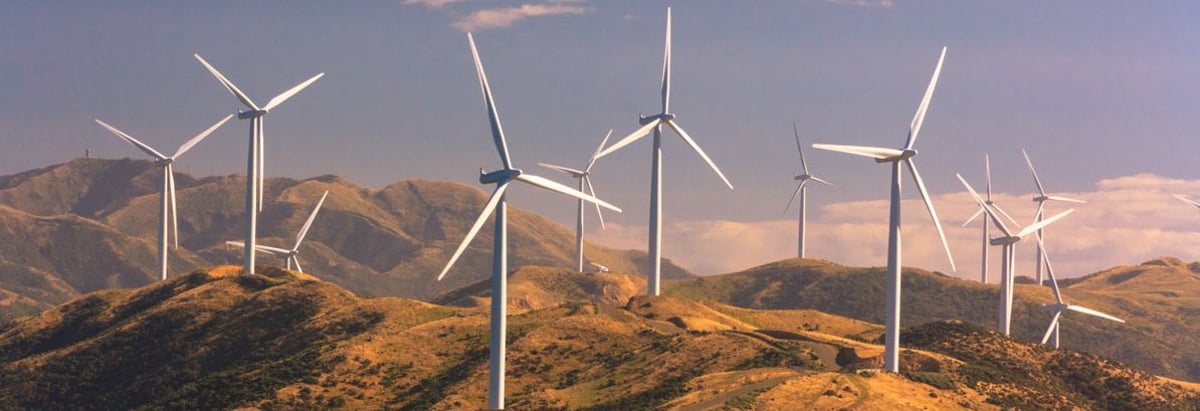
Some say volatility, rather than debt, is the best way to think about risk as an investor, but Warren Buffett famously said that 'Volatility is far from synonymous with risk.' It's only natural to consider a company's balance sheet when you examine how risky it is, since debt is often involved when a business collapses. We can see that EDP Renováveis, S.A. (ELI:EDPR) does use debt in its business. But should shareholders be worried about its use of debt?
When Is Debt A Problem?
Generally speaking, debt only becomes a real problem when a company can't easily pay it off, either by raising capital or with its own cash flow. Ultimately, if the company can't fulfill its legal obligations to repay debt, shareholders could walk away with nothing. However, a more usual (but still expensive) situation is where a company must dilute shareholders at a cheap share price simply to get debt under control. By replacing dilution, though, debt can be an extremely good tool for businesses that need capital to invest in growth at high rates of return. The first step when considering a company's debt levels is to consider its cash and debt together.
Check out our latest analysis for EDP Renováveis
How Much Debt Does EDP Renováveis Carry?
You can click the graphic below for the historical numbers, but it shows that as of September 2022 EDP Renováveis had €6.81b of debt, an increase on €4.15b, over one year. On the flip side, it has €1.21b in cash leading to net debt of about €5.61b.

How Strong Is EDP Renováveis' Balance Sheet?
Zooming in on the latest balance sheet data, we can see that EDP Renováveis had liabilities of €4.79b due within 12 months and liabilities of €17.5b due beyond that. Offsetting this, it had €1.21b in cash and €3.09b in receivables that were due within 12 months. So it has liabilities totalling €18.0b more than its cash and near-term receivables, combined.
This deficit is considerable relative to its very significant market capitalization of €19.5b, so it does suggest shareholders should keep an eye on EDP Renováveis' use of debt. This suggests shareholders would be heavily diluted if the company needed to shore up its balance sheet in a hurry.
In order to size up a company's debt relative to its earnings, we calculate its net debt divided by its earnings before interest, tax, depreciation, and amortization (EBITDA) and its earnings before interest and tax (EBIT) divided by its interest expense (its interest cover). This way, we consider both the absolute quantum of the debt, as well as the interest rates paid on it.
EDP Renováveis's debt is 3.9 times its EBITDA, and its EBIT cover its interest expense 4.7 times over. This suggests that while the debt levels are significant, we'd stop short of calling them problematic. Pleasingly, EDP Renováveis is growing its EBIT faster than former Australian PM Bob Hawke downs a yard glass, boasting a 177% gain in the last twelve months. The balance sheet is clearly the area to focus on when you are analysing debt. But ultimately the future profitability of the business will decide if EDP Renováveis can strengthen its balance sheet over time. So if you want to see what the professionals think, you might find this free report on analyst profit forecasts to be interesting.
But our final consideration is also important, because a company cannot pay debt with paper profits; it needs cold hard cash. So we clearly need to look at whether that EBIT is leading to corresponding free cash flow. During the last three years, EDP Renováveis burned a lot of cash. While investors are no doubt expecting a reversal of that situation in due course, it clearly does mean its use of debt is more risky.
Our View
We'd go so far as to say EDP Renováveis's conversion of EBIT to free cash flow was disappointing. But at least it's pretty decent at growing its EBIT; that's encouraging. Looking at the balance sheet and taking into account all these factors, we do believe that debt is making EDP Renováveis stock a bit risky. That's not necessarily a bad thing, but we'd generally feel more comfortable with less leverage. The balance sheet is clearly the area to focus on when you are analysing debt. However, not all investment risk resides within the balance sheet - far from it. Case in point: We've spotted 2 warning signs for EDP Renováveis you should be aware of, and 1 of them doesn't sit too well with us.
If you're interested in investing in businesses that can grow profits without the burden of debt, then check out this free list of growing businesses that have net cash on the balance sheet.
Valuation is complex, but we're here to simplify it.
Discover if EDP Renováveis might be undervalued or overvalued with our detailed analysis, featuring fair value estimates, potential risks, dividends, insider trades, and its financial condition.
Access Free AnalysisHave feedback on this article? Concerned about the content? Get in touch with us directly. Alternatively, email editorial-team (at) simplywallst.com.
This article by Simply Wall St is general in nature. We provide commentary based on historical data and analyst forecasts only using an unbiased methodology and our articles are not intended to be financial advice. It does not constitute a recommendation to buy or sell any stock, and does not take account of your objectives, or your financial situation. We aim to bring you long-term focused analysis driven by fundamental data. Note that our analysis may not factor in the latest price-sensitive company announcements or qualitative material. Simply Wall St has no position in any stocks mentioned.
About ENXTLS:EDPR
EDP Renováveis
A renewable energy company, plans, constructs, operates, and maintains electricity power stations.
Reasonable growth potential and slightly overvalued.


